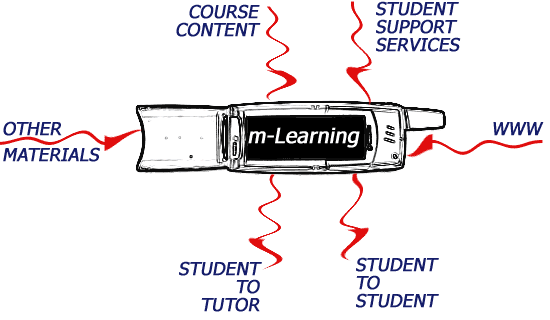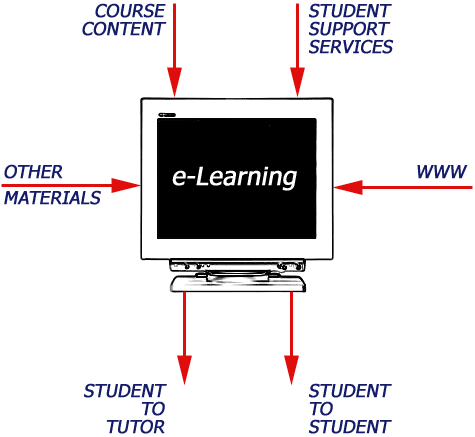

Introduction
The learning process is considered as one of the most incredible technologies ever invented by people. Indeed, it is the instrument, which is vitally important for the social development and the revolution of consciousness. Learning is the bridge that connects several generations of people and helps to accumulate the knowledge and experience necessary for the further existence. Significantly, the new generations should not work on that hard on gaining the essential knowledge or developing the skills; they just need to learn the knowledge base that their predecessors left for them. Nowadays, there exists a huge gap between the things taught in the educational and learning systems and the actual human experience. Indeed, accumulating new knowledge is a time- and effort-consuming process since it is particularly difficult to digest the previous experience, interpret it and organize into the new system of knowledge. Significantly, to develop in the correct way, the new generations should be well-equipped with the instructions given them by the previous ones.
The modern society is developing with the incredible speed, and the age of new technologies causes new tendencies and realms, as well as brings the certain challenges of unprecedented magnitude and intensity. Confronting these challenges becomes the number one priority for the new generations of people. They should realize that the accelerating pace of the world should be accompanied by the incremental development of the learning content. The thirst for knowledge and the desire to master the learning process unite the individuals together. To reach the desired outcome, the learners should have the common learning goals. To improve the comprehensive curriculum and meet the diverse needs of these people, the instructors can use a vast majority of methods including e-learning, d-learning, and m-learning strategies, which are aimed at improving the level of knowledge.
The Learning Process
The Definition of Learning
The learning process is the activity in which the human wisdom, skills, and knowledge acquired by one generation are transferred to the following one. This process began with the appearance of the first people. Indeed, this is the most important process of reserving, development and improvement of human knowledge and culture. This process began millions of years ago and had continued till the present moment. Many centuries ago, the society invented the key learning institutions where the educational processes took place and called them as the schools. In these institutions, the scholars and philosophers could transfer the profound knowledge base for the new generations of people and help them to understand the laws of the surrounding world better. The schools were the officially declared places as the institutions where everyone could gain the necessary knowledge. In the 12th century, the new educational objects appeared. They were called the universities. While the school gave the essential knowledge base necessary for every individual, the universities specialized in providing the students with the specific details in the certain spheres. Soon, various training centers and institutes were added to the educational system. They also had the equal purpose – to supply the individual with the knowledge necessary for successful performing the prescribed functions in the society. Nowadays, there are two essential forms of the learning process: the conventional education and distance education. The following paper focuses on exploring the different types of the learning process including electronic learning (e-learning), distance learning (d-learning), as well as mobile learning (m-learning).
What is Conventional learning?
Conventional learning implies live communication between two or more subjects of the learning process. It is also known as the face-to-face education, or the instructor-led training (ILT). Carefully analyzing this concept, one can conclude that conventional learning has three essential characteristics. First, the instructor and the pupils meet each other at a certain time and place; the learning purposes gather them under the fixed conditions. Second, the student is considered as the part of the group and needs to work in a team. Third, in conventional learning, the interpersonal communication is considered as the most important tool for transferring the knowledge from the teacher to the students.
The Western historians benefited the process of conventional education to a great extent since they taught their followers with the help the interpersonal communication. Being unable to use other means, they improved and benefited this process. Therefore, the Western theorists defined the main characteristics of the learning group, its common strategies, the peculiarities of the relationship between the instructors and the learners, as well as the educational standards that dominated in the group. Nowadays, society realizes the importance of building the new schools, colleges, and universities which would perform the main functions of learning. The essential characteristic of any educational institution is to gather the instructors, teachers, and the learners together with the same goal participate in the learning processes to gain the knowledge which would help these people to benefit their personal life and the country’s well-being. Moreover, there also exist the sophisticated laboratories and training centers which aim to enlarge the students` knowledge in certain disciplines and turn them into the certified specialists.
The colleges are the educational institutions, either financed by the government or corporately owned, which aim to provide the learners with the appropriate level of skills and educational competence so that the students could be able to become the future workforce. The universities are the places where the process of effective transmission of knowledge of one generation to the next one is successfully performed. The student attends the lectures and acquires more complex system of knowledge necessary for benefiting the surrounding world.
The University Learning Evolution
One can trace the development of the universities to the mid-19th century, where there appeared the educational institutions with the higher learning purposes. Initially, the non-residential universities appeared. The 20th century became the age of appearing the part-time daytime and nighttime universities. In the late 20th century, the first distance teaching university appeared in Great Britain. It should be noted that the humanity is expecting the appearance of the brand new forms of the universities in the nearest feature. Significantly, the process of creating the new universities was not limited to the mentioned time frames.
You may also learn about term paper in our article: “College Term Papers”
Distance Learning
The Appearance of Distance Learning
The Industrial Revolution helped the humanity to develop with the incredible speed. In particular, it has made the idea of distance learning possible. What is more, the development of transport and communication contributed the distance learning processes. Thus, the learners received the wonderful possibility to participate in the learning process separated even being far from the teacher and the group. Without changing the ultimate goal of education, the Industrial Revolution enabled the students to receive the necessary knowledge with the help of technologies.
Distance learning used the various technologies which contributed to the separation of the student from the teacher at the same time maintaining the integrity of the learning process. These methods helped to replace the intercommunication with the help of the sophisticated technological devices without losing the essence of the process. Distance learning allowed inventing and developing the learning materials and methods for the student learning distantly from the teacher and his learning group. Thus, the students could be involved in their home affairs, work on the plants of factories or be in any other place, but at the same time follow the educational program.
The Advantages of Distance Learning
Without any doubts, distance learning benefits the society. It enabled the students to get the necessary knowledge and skills anywhere. In human life, there are a lot of conditions that do not allow attending the educational institutions, and the distance learning is the perfect choice for those students who do not want to ignore the learning process. Thus, the student can gain knowledge at any time of day or night, at any place. Therefore, one can conclude that distance learning can help to avoid the problems allowing the student receive the certain education whenever he finds it appropriate.
Development of Distance Learning
Despite the obvious benefits of distance learning, it was extensively criticized by the scholars for about 100 years. The governments also used to ignore this progressive method of learning since they did not believe in its effectiveness. A major breakdown took place in the 1970s with the founding of the Open University in the United Kingdom, the Universidad National de Education a Distancia in Spain, as well as the Fern University in Germany. These universities proved that the distance learning is the particularly useful tendency and it can be used rather successfully.
E-Learning
The Evolution of E-Learning
The next type of the learning process that revolutionized the common views was e-learning. The accelerated growth of the sphere of technologies made it possible to receive the education with the help of the electronic devices. These wonderful devices helped to combine the face-to-face communication with the distance. The introduction of the computing technologies dates back in the mid-1960s when the first computer was invented. Moreover, the electronic revolution, which took place in the 1980s, allowed the students to realize the benefits of the e-learning. Without any doubts, it speeds up the educational process helping the students to get the equal level of knowledge within the shorter time.
The E-Learning Definition
The e-learning is a short name of the electronic learning. By the late 1990s, the World Wide Web became the mature field for distance training provision. The acknowledged technologists and educators began the extensive work in this field experimenting with the methods and their results. As such, they have launched the electronic programs allowing the students and teachers to experience the significant advantages of this brand new system. Their work in this sphere created the army of learners who wanted to get the necessary knowledge in front of the screen.
The Advantages of E-Learning
The e-learning system has already proved a lot of significant benefits. First and foremost, it allows people to receive education whenever they need it. Besides, it allows them to avoid traveling, which enables the society to reduce the overall carbon output. Also, it makes all the information available on-line, which is good for reducing the paper usage. These and many other facts make e-learning a more environment-friendly solution than the traditional one. In addition, e-learning makes the high-quality education more affordable. It means that the students have access to the sophisticated programs that can help them to enlarge their knowledge base with the incredible speed. There are no economic, political, or physical barriers for e-learning. Anyone who interested in it can access it at a rather reasonable cost. Consequently, this method helps the students to drastically reduce the costs spent on the higher education. All the student needs to have is the computer, the Internet connection and the desire to develop his knowledge and skills. What is more, e-learning is available 24/7 for its users. They can get the knowledge at any time of day or night regardless their time zone making the breaks whenever they are needed.
- Free formatting
- Free email delivery
- Free outline (on request)
- Free revision (within 2 days)
- Free title page
- Free bibliography
- 24/7/365 Customer Support
- Quality research and writing
- BA,MA, and PhD degree writers
- 100% confidentiality
- No hidden charges
- Works are never resold
- 100% authenticity
- 12pt. Times New Roman
- Double-spaced/Single-spaced papers
- Up-to-date sources
- Fully referenced papers
- 1 inch margins
- Any citation style
What is Mobile Learning?
The Appearance of Mobile Learning
As well as e-learning, mobile learning is virtually impossible without the developing technologies. Indeed, it is the natural extension of e-learning, which focuses on communication as the crucial factor in the learning process. Without any doubts, m-learning can also bring a lot of benefits to the process of education. Hence, it helps to optimize the learning process and improve its quality normalizing the communication between its active participants.
The Main Functions of M-Learning
As the name suggests, m-learning helps to acquire the skills and knowledge by using the mobile phone and other sophisticated IT devices such as laptops and tablets. The teachers and students adore this concept since it makes the learning process interesting and exciting. Besides, it facilitates this process allowing getting a lot of benefits from it. Again, with the development of new devices, the process of m-learning becomes affordable for everyone. The price for mobile phones or the tablets is significantly lower than the price for computers, which makes m-learning affordable for everyone who has the desire to acquire the new skills and shape his worldview.
Although m-learning proved to be a very useful tool in the learning process, it still has some disadvantages. Thus, a limited amount of information can be displayed on the phone or tablet. Also, the batteries do not allow to have access to the knowledge in 24/7 regime. However, the most significantly, the accelerated development in the IT sphere makes these devices outdated within relatively short periods of time. As for the technical challenges, one should mention about the connectivity, the size of the screen as well as the key size, and multiple standards and disparity of the operational systems.


The following diagram serves as the comparative table between the e-learning and m-learning.
Learning in the UAE
The United Arab Emirates is a developing country which constantly works on the improvement of the learning processes. In this country, the importance of getting a premium-quality higher education is realized on the governmental level. In particular, the unique and modern Mohammed Bin Rashid Smart Learning Program has made an incredible contribution to the analysis of the technology integration into the educational system.
The Essence of Mohammed Bin Rashid Smart Learning Program
This program was installed and developed for the further establishment of the advanced education system in the United Arab Emirates. According to the program, the students should receive proper education and leadership skills to be able to benefit their native community. Therefore, the program developers concentrated their attention on the connection of the modern technology with the educational processes.
The History of the Program
The program was successfully launched by Vice-President and Prime Minister of the UAE, His Highness Sheikh Mohammed bin Rashid Al Maktoum. It incorporates a lot of aspects including the previous experience and the future perspectives of the UAE education. With the help of the program, the UAE government is going to shape the new learning environment by introducing the new technologies to all the participants of the learning process. The launching of the so-called smart classes is the premium goal of the program. It is worth noting that this initiative was supported and encouraged at the Prime Minister’s office.
The Brand New Vision on the Learning Experience
Without any doubts, the Mohammed Bin Rashid Smart Learning Program has become the important step in the improvement of the education system of the United Arab Emirates. This program proved the importance of integration of the modern technologies into the educational system and allowed to reshape the learning process in a brand new form. This program placed the student in the center of the learning process allowing him to choose the tools and methods necessary for enlargement of his knowledge base. Moreover, the technologically equipped rooms made it possible to engage the students in various interactive discussions necessary for the successful development of their communication, analytical and time-management skills. Indeed, this program has the purpose of shaping the young minds and helping them to find their places in the world. Undoubtedly, the well-educated people can greatly benefit the native community working on the innovations and facilitating the lives of the ordinary people.
The Statistics of the Program
The first phase of the program covered 123 schools and influenced the lives of 11,000 students in 2013/2014 years. The second phase covered the educational process of 25,000 students during 2014/2015 years. With every following year, the program will improve and involve more and more educational institutions according to the well-thought plan of development. It aims to cover all the schools in 2019, making the high-quality education available for every UAE citizen. As the program progresses, it allows the students to get the regular access to the high-quality educational services.
The World Recognition
Undoubtedly, the Mohammed Bin Rashid Smart Learning Program has been recognized on the world level. Thus, the acknowledged scholars highly appreciate its benefits claiming that this Program is able to put the UAE education on the higher level. The team that helped Mohammed Bin Rashid to launch and develop his program has got The Best Team award for its contribution to the improvement of the educational system in the UAE. The Mohammed Bin Rashid Smart Learning Program received the world recognition due to its simplicity and effectiveness.
Indeed, the developed countries focus on the improvement of their educational systems since they understand that the well-educated nation is the condition necessary for the successful development of the country. The UAE government is going to implement the program within the shortest time possible. Undoubtedly, the program will make the Emirati students well-equipped with the useful methods and skills which will enable them to find the competitive jobs in future. This program has made the smart learning processes accessible for everyone. It enables everyone, regarding the age, gender, and political views, get the instant access to the high-quality education. What is more, one should admit that the program blended the traditional approach with the progressive methods and became the top-priority task for the UAE government.
Conclusion
The learning processes are vitally important in human life since they help to understand the laws of the surrounding world. The previous generations carefully accumulated the knowledge and organized them into a well-developed system, so that the people living in the 21st century could use it effectively. Knowledge serves as the tool for understanding the human essence, its history and culture. Gaining more knowledge about the surrounding world, the individual becomes able to benefit the community he lives in. Certainly, the well-educated people have much more chances and possibilities in the modern world since they can apply their efforts to any sphere. Therefore, one should be aware of all kinds of the learning process.
The very first type, conventional learning, requires the direct communication of the instruction and the learner. To transfer the knowledge from one generation to another, they needed to meet each other in a certain time and place. The development in the sphere of technology allowed the humanity to launch the new types of learning: the e-learning and the m-learning. Also, the Industrial Revolution has become the important step in reconsidering the existing views about the learning process making it work distantly. Nowadays, there is no need in face-to-face cooperation; people can learn everywhere and every time. E-learning is the perfect choice for those people who appreciate their time or cannot attend the educational institution because of the various reasons. A vast majority of the sophisticated devices and programs helps the learners to receive the appropriate education even without leaving the house. M-learning is the result of e-learning. It enables the students to get the necessary information using the mobile phones, laptops, tablets and many other devices. Although this method makes the learning process accessible for everyone, it has some significant disadvantages.
The education system in the United Arab Emirates has many benefits in comparison to other countries. The Mohammed Bin Rashid Smart Learning Program also played a significant role in popularizing the education in the UAE. This program allows the student to get the knowledge with the help of the developing technologies and become the good specialist in various spheres. It should be noted that this program is the significant contribution to the successful development of the country since it allows making the following generation of people more knowledgeable and well-educated. Undoubtedly, these people will become the driving force in the improvement of the UAE image among the other states.





